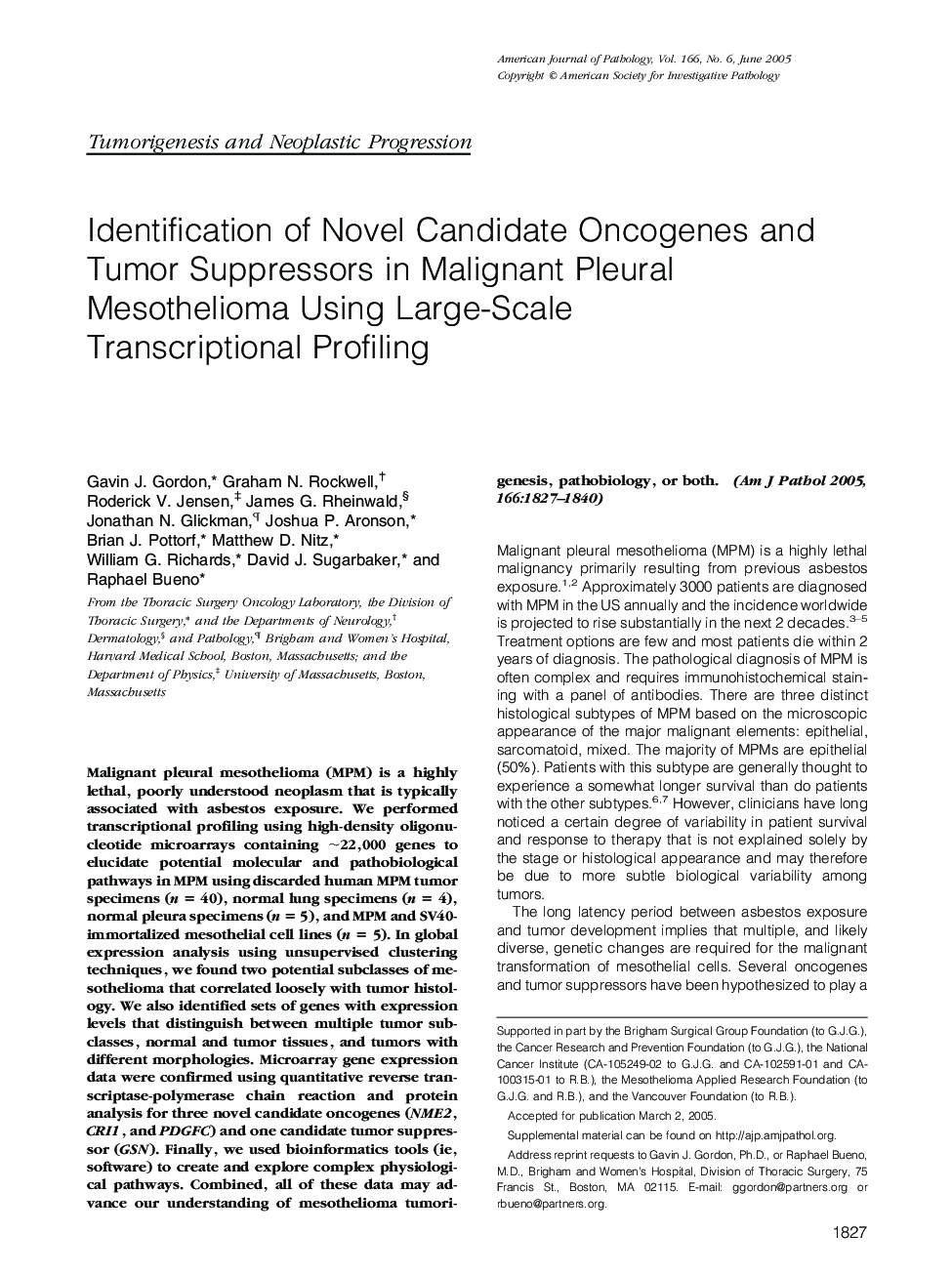| Article ID | Journal | Published Year | Pages | File Type |
|---|---|---|---|---|
| 9943357 | The American Journal of Pathology | 2005 | 14 Pages |
Abstract
Malignant pleural mesothelioma (MPM) is a highly lethal, poorly understood neoplasm that is typically associated with asbestos exposure. We performed transcriptional profiling using high-density oligonucleotide microarrays containing â¼22,000 genes to elucidate potential molecular and pathobiological pathways in MPM using discarded human MPM tumor specimens (n = 40), normal lung specimens (n = 4), normal pleura specimens (n = 5), and MPM and SV40-immortalized mesothelial cell lines (n = 5). In global expression analysis using unsupervised clustering techniques, we found two potential subclasses of mesothelioma that correlated loosely with tumor histology. We also identified sets of genes with expression levels that distinguish between multiple tumor subclasses, normal and tumor tissues, and tumors with different morphologies. Microarray gene expression data were confirmed using quantitative reverse transcriptase-polymerase chain reaction and protein analysis for three novel candidate oncogenes (NME2, CRI1, and PDGFC) and one candidate tumor suppressor (GSN). Finally, we used bioinformatics tools (ie, software) to create and explore complex physiological pathways. Combined, all of these data may advance our understanding of mesothelioma tumorigenesis, pathobiology, or both.
Related Topics
Health Sciences
Medicine and Dentistry
Cardiology and Cardiovascular Medicine
Authors
Gavin J. Gordon, Graham N. Rockwell, Roderick V. Jensen, James G. Rheinwald, Jonathan N. Glickman, Joshua P. Aronson, Brian J. Pottorf, Matthew D. Nitz, William G. Richards, David J. Sugarbaker, Raphael Bueno,
